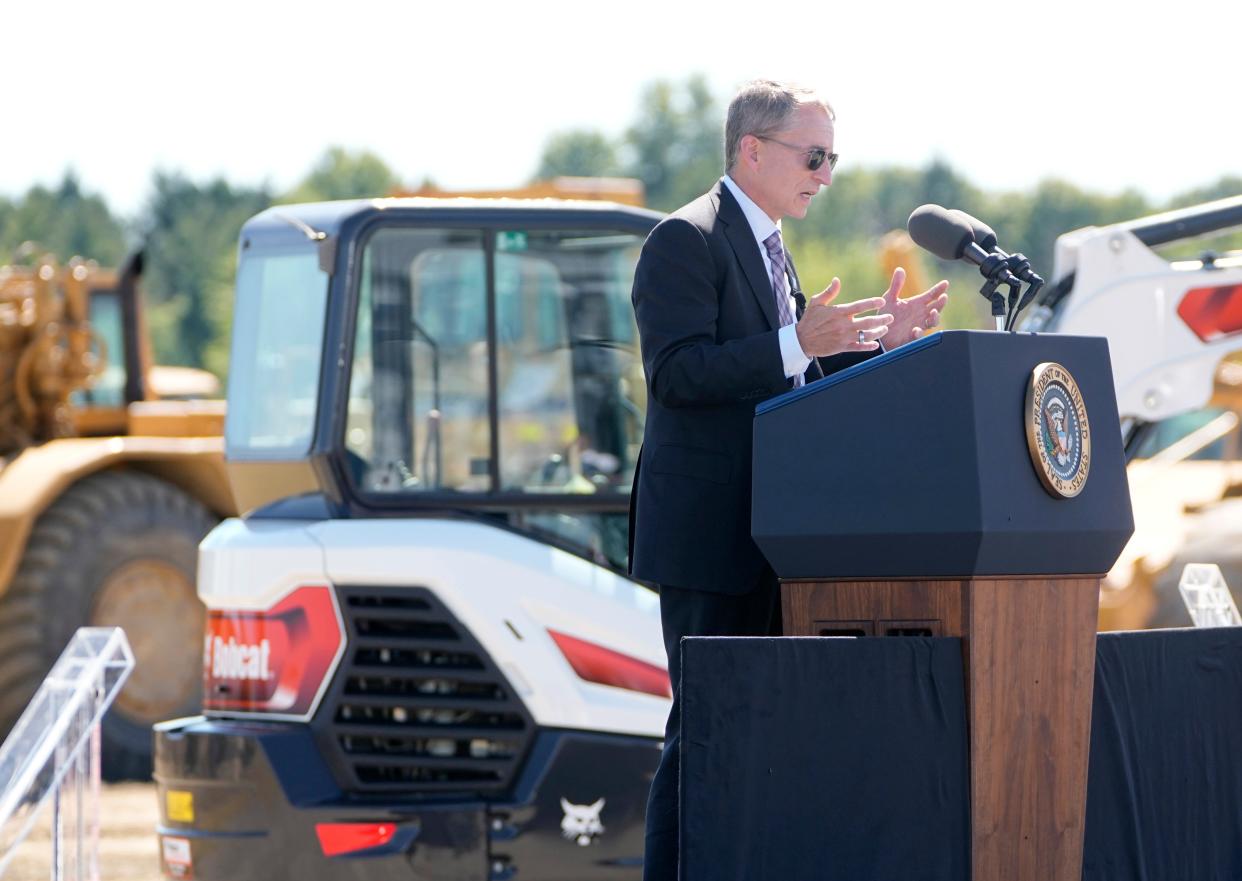Ohio loses most jobs in the nation during September

The string of recent announcements that Intel, Honda, Ford and others plan to invest billions of dollars in Ohio promise to create thousands of good-paying manufacturing jobs in the years to come in a state that needs them.
For now, though, adding jobs of any kind to the Ohio economy has gotten tough.
Ohio employers cut 7,600 jobs in September, the most of any state, according to state and federal jobs data.
The unemployment rate held steady at the low rate of 4% in September, but only because the number of people in the labor force shrank by 10,000, state employment data show.
More on Ohio jobs:Ohio offers $156 million in incentives for Honda battery project
"The overall trend for job gains in Ohio has stagnated in recent months with fewer than 6,000 jobs added since April," Nationwide senior economist Ben Ayers said in a research note after the state jobs report was released.
September's job losses means Ohio now needs about 133,000 jobs to get back to where it was before COVID-19 began in 2020.
"Demand for labor in Ohio has waned over the past few months with a sharp drop in reported job openings," Ayers said. "But there continue to be fewer unemployed workers than unfilled positions, suggesting a tight labor market."
DeWine: No better place than Ohio
When Honda released details of its joint venture with South Korean company LG Energy Solution to build a $3.5 billion battery plant for electric vehicles in Fayette County southwest of Columbus, Gov. Mike DeWine celebrated the announcement in front of several hundred people at the Statehouse.
“Honda and LG Energy Solution now join a long list of companies that have looked all over the country for the best place to do business and have chosen Ohio because we have the ideal economic climate and an innovative and talented workforce" he said. "Today’s announcement is further proof that there is no better place to be right now than in the great state of Ohio.”
The two companies say they'll create 2,200 jobs at the plant in southwest Ohio, and Honda says it will add 327 jobs at three Ohio plants west of Columbus that will be retooled to make electric vehicles and components.
The announcement follows ones from Intel, which says it will create 3,000 jobs in Licking County; Ford's plans to add 2,000 jobs in Avon Lake, near Cleveland, to make electric commercial vehicles; and Chinese company Semcorp Manufacturing USA's plan to create 1,200 jobs in Sidney in western Ohio for operations that will make materials used in batteries that power electric vehicles and other products.
While the announcements are good news, they need to be put in context, said Mike Hicks, economics professor at Ball State University in Muncie, Indiana, who studies the Midwest economy.
"The new jobs announcements are a small share of overall employment,’’ he said, citing studies over the past 20 years that show 1.3% to 1.8% of job growth comes from such announcements while the rest comes from existing employers adding jobs.
While these manufacturers will add thousands of jobs in Ohio, they still are a fraction of Ohio's 5.5 million jobs.
Manufacturing was the highlight of Ohio's jobs report for September, adding 8,700 jobs, more than any other sector. Ohio now has 690,300 manufacturing jobs, nearly as many as it had before the pandemic began in March 2020.
Meanwhile, the state is losing jobs throughout service industries.
More employment news:Political, community leaders celebrate Honda investment in Ohio battery factory
The leisure and hospitality sector, among the hardest hit by the coronavirus, lost 5,400 jobs last month followed by 5,300 jobs in the private education and health care sector. A broad sector of the economy called "other services" that covers everything from pet groomers to funeral home directors, lost 5,000 jobs, and the sector that covers professional and business services lost 3,200 jobs.
Hicks believes that over time, manufacturing jobs will continue to decline as companies invest in automation. The workers in these plants will be highly educated and skilled, he said.
With the rise of remote work, cities in the Midwest where population growth has been mostly stagnant need to do more to show people that the cities are good, affordable places to live, he said.
"A lot of people are leaving unattractive places and moving to attractive places," Hicks said.
Is a recession coming?
If there is a recession coming, you couldn't tell it from the rising GDP numbers last week or the financial results released by Huntington Bancshares last week.
The bank's third-quarter numbers covering the July 1-Sept. 30 were records, posting profit of $594 million, more than 50% higher than the year-ago quarter.
"This is one of the quarters you dream about," said Steve Steinour, the bank's chairman, president and CEO.
But Steinour acknowledged the economy is slowing, and the bank's business customers are preparing for a recession.
"We're heading toward a recession, if not in one now,’’ Steinour said.
Businesses say the top issue is inflation, followed by their need for workers, Steinour said.
Meanwhile, the Federal Reserve wants to slow the economy as a way to cool inflation running at 40-year highs, raising interest rates that are already taking a toll.
Finding workers may be tough, Nationwide's Ayers said.
"September did not show any improvement in labor supply within the state as the labor force contracted modestly again," he said. "Even with high wages and widespread job openings, many potential workers within Ohio remain on the sidelines, limiting hiring options for employers and reducing job gains."
mawilliams@dispatch.com
@BizMarkWilliams
This article originally appeared on The Columbus Dispatch: Ohio needs to add about 133,000 jobs to get back to pre-pandemic levels

